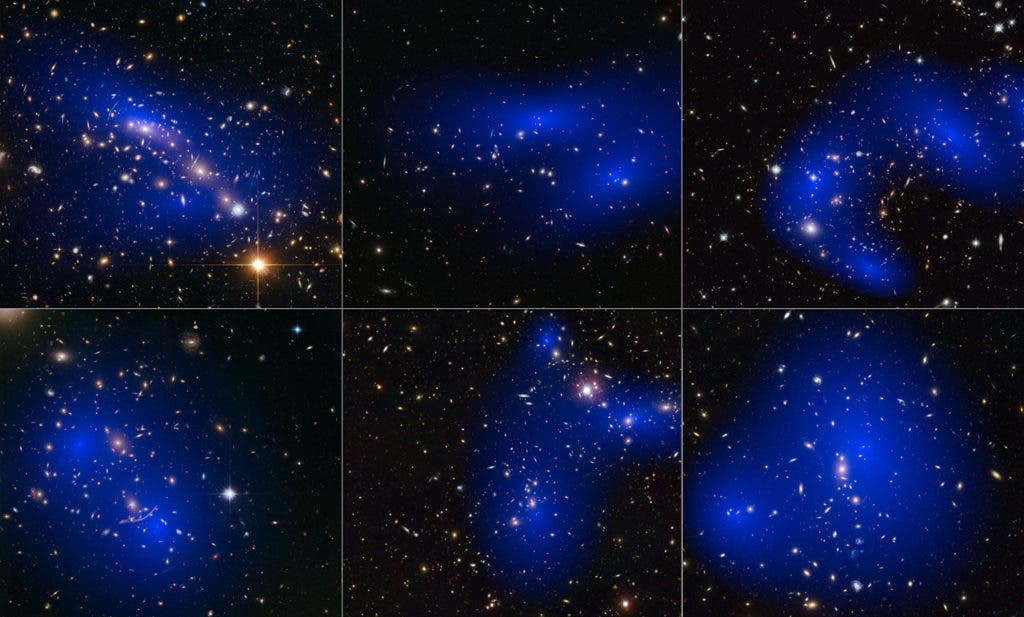Our limited understanding of dark matter and the fact that we’re focusing on the wrong things might be preventing us from discovering alien life.

A Cosmic Gorilla
You know that experiment where you’re supposed to count the number of basketball passes, and you’re so focused on the ball that you don’t even see a bear moving through the picture? Researchers believe something similar might be happening on a cosmic scale. We’re so focused on one thing that we’re completely missing the other — and in this case, ‘the other’ might mean alien signals.
Writing in the journal Acta Astronautica, neuropsychologists Gabriel de la Torre and Manuel García, from the University of Cádiz, say that when it comes to detecting alien signals, we might be looking in the wrong direction. They say that we’re looking for aliens that act similarly to us when that might really not be the case.
“When we think of other intelligent beings, we tend to see them from our perceptive and conscience sieve; however we are limited by our sui generis vision of the world, and it’s hard for us to admit it,” says De la Torre, who prefers to avoid the terms ‘extraterrestrial’ or aliens by its Hollywood connotations and uses more generic terms, such as ‘non-terrestrial’.
“What we are trying to do with this differentiation is to contemplate other possibilities,” he says “for example, beings of dimensions that our mind cannot grasp; or intelligences based on dark matter or energy forms, which make up almost 95% of the universe and which we are only beginning to glimpse. There is even the possibility that other universes exist, as the texts of Stephen Hawking and other scientists indicate.”
https://www.youtube.com/watch?v=Ahg6qcgoay4
The awareness test that inspired the study. Try to count the number of basketball passes. Did you also catch something out of the ordinary?
Hardwired to miss it
In order to test their hypothesis, they had 137 people distinguish aerial photographs with artificial structures (such as buildings or roads) from others with natural elements (such as mountains or rivers). In one of the images, a tiny character disguised as a gorilla was inserted to see if the participants noticed. As expected, participants tended to miss the gorilla. It’s normal because we’re hardwired to miss it — we’re looking for something else. Similarly, if we’re looking for a specific kind of signal, we might completely miss an unrelated type of signal, one we weren’t expecting.
“If we transfer this to the problem of searching for other non-terrestrial intelligences, the question arises about whether our current strategy may result in us not perceiving the gorilla,” stresses the researcher, who insists: “Our traditional conception of space is limited by our brain, and we may have the signs above and be unable to see them. Maybe we’re not looking in the right direction.”
In another example presented in the article, researchers showed participants an apparently geometric structure that can be seen in the images of Occator — an impact crater of the dwarf planet Ceres, famous for its bright spots. Inside the crater appears a strange structure, looking like a square inside a triangle. The point researchers were trying to make is that we sometimes see patterns that just aren’t there, due to the way our brains are wired.
“Our structured mind tells us that this structure looks like a triangle with a square inside, something that theoretically is not possible in Ceres,” says De la Torre, “but maybe we are seeing things where there are none, what in psychology is called pareidolia.”

But the opposite might also be happening, they say. We might have the signal right in front of our eyes, and simply miss it — kind of like a cosmic gorilla effect.
Types of civilizations
We’re not really sure what to expect in terms of potentially advanced alien species, but the most commonly used scale is the Kardashev scale, proposed by Russian astrophysicist Nikolai Kardashev. The scale has three main categories, and it focuses on different stages of energy capture and use, which seems to be a vital requirement for an advanced species:
- A Type I civilization (a planetary civilization) can use and store all of the energy which reaches its planet from the parent star.
- A Type II civilization (a stellar civilization) can harness the total energy of its planet’s parent star and use it on a planet.
- A Type III civilization (a galactic civilization) can control energy on the scale of its entire host galaxy.
If you’ll look at it closely, you’ll see that humans aren’t really even on a Type I level yet, so the Kardashev scale has been extended, both upwards and downwards, including:
- A Type 0 civilization (humans) that harvests a significant part of its planet energy, just not yet to its full potential.
- A Type IV civilization (a universal civilization) that can control energy on the scale of the entire universe. This is already a virtually indestructible civilization. This hypothetical civilization would be able to interact with and harvest dark matter and dark energy.
- A type V civilization (a multiversal civilization) — this already steps into the realm of metaphysics and assumes there is more than one universe, and a civilization that’s able to span and populate several universes.
- A type VI civilization (deities) that would have the ability to interact with universes outside of time and space, similar in concept to an absolute deity.
Already, it’s becoming quite clear that we don’t even know how to understand very advanced alien civilizations, assuming that they exist. We might be able to understand a Type 0, I, or II civilization, assuming that they do share some similarities with us. But should we come across the higher levels of civilization, would we even realize what we’re looking at? This is what de la Torre and Garcia are asking. For all we know, dark matter and dark energy might hold the traces of such an advanced civilization. Of course, the researchers themselves admit the inherent shortcomings when you’re classifying something you know nothing about.
“We were well aware that the existing classifications are too simplistic and are generally only based on the energy aspect. The fact that we use radio signals does not necessarily mean that other civilizations also use them, or that the use of energy resources and their dependence are the same as we have,” the researchers point out, recalling the theoretical nature of their proposals.
The duo also proposes a different civilization scale, with 3 types. Type 1 is essentially ours, ephemeral, vulnerable to a planetary cataclysm, either natural or self-made. Type 2 is characterized by the longevity of its members, able to explore galaxies and overall much more durable. Type 3, as you’d expect, would be constituted by exotic creatures with eternal or near-eternal life, with an absolute dominion over the universe.
Naturally, this is all a bit speculative. We don’t really know whether we’re looking for the right thing or not, we don’t even know if there is a right thing or not. How likely are we to miss an alien signal, in the case that it exists? Impossible to tell right now. So this study definitely goes a bit ‘out there’, but it poses some intriguing questions.
If anything, the main takeaway is that we should perhaps take a step back and reconsider what alien life might look like. In other words, we shouldn’t only be counting the passes — we should keep an eye out for any gorillas.
Journal Reference: Gabriel G. De la Torre, Manuel A. Garcia. The cosmic gorilla effect or the problem of undetected non terrestrial intelligent signals. Acta Astronautica, 2018; 146: 83 DOI: 10.1016/j.actaastro.2018.02.036


